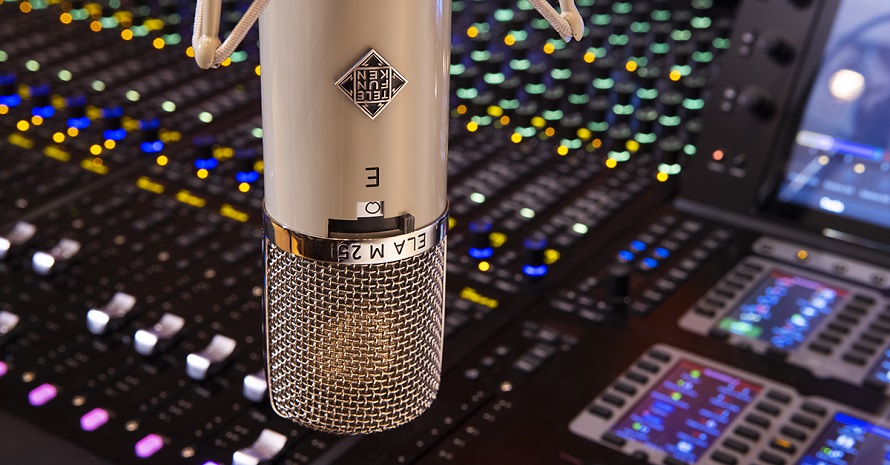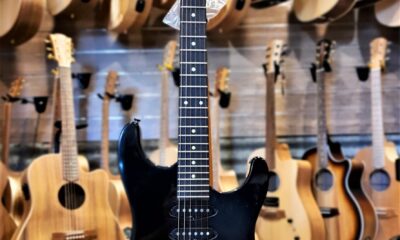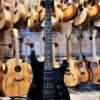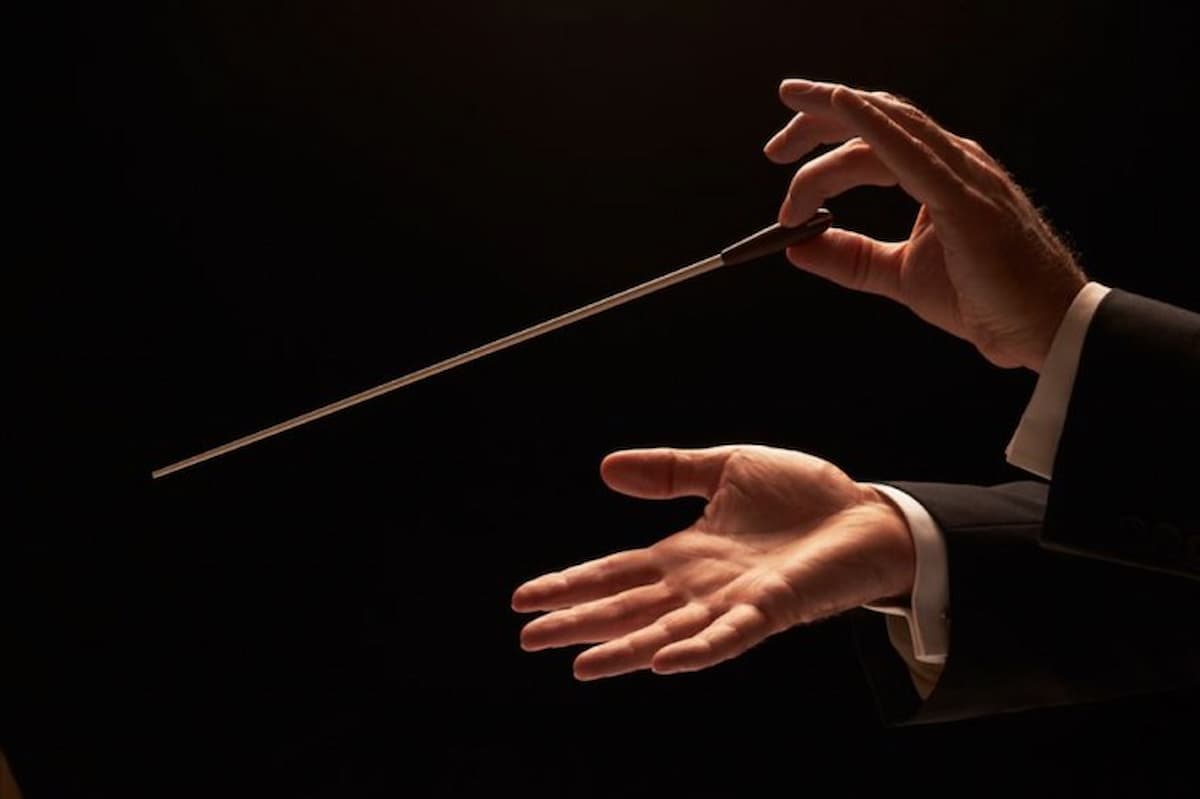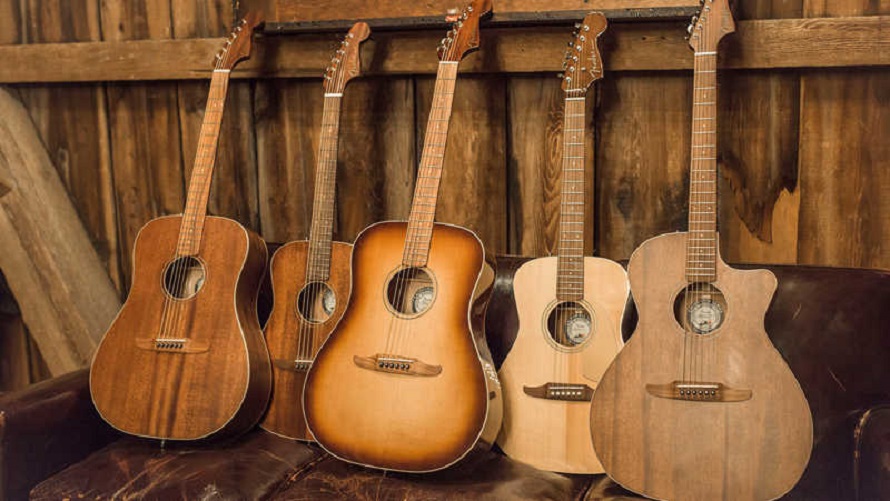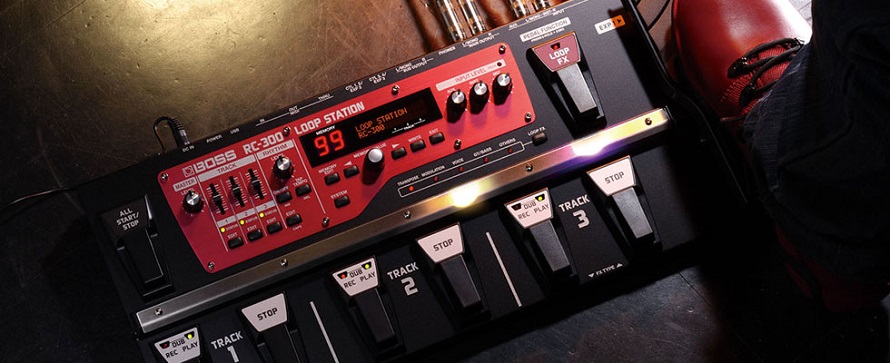Audio & Video
Beginner’s Guide to Producing Music at Home
Whether you’re a budding musician, a pro songwriter, or someone who loves creating melodic masterpieces, you don’t need a ton of equipment to create a home studio. Gone are the days when people needed a fancy recording studio or expensive equipment to bring their musical visions to life. In this digital era, all you need to practice this fun hobby for all ages is passion, creativity, and a few essential tools at your fingertips.
Join me as I delve into the world of DIY music production, uncovering the must-have gear and software that will empower you to unleash your musical genius without ever leaving your house. Get ready to transform your living space into a powerhouse of rhythm and sound!
Digital Audio Workstation (DAW)
One of the first things you’ll need for a home studio is a digital audio workstation. This software application is the heart and soul of your music production process. It allows you to record, edit, mix, and produce your tracks right from your computer. Now, with so many options available, finding the perfect one for your needs can be a bit overwhelming.
First off, you’ll want to make sure that the DAW you choose works seamlessly with your operating system (Windows, macOS, Linux) and the hardware you plan to use. Compatibility ensures a smooth integration and hassle-free experience.
Different DAWs offer various capabilities, so it’s crucial to consider your specific music production requirements. Do you need robust MIDI capabilities? How about virtual instruments, audio effects, mixing tools, or automation options? Take the time to evaluate the features that matter most to you and choose a DAW that caters to your musical vision.
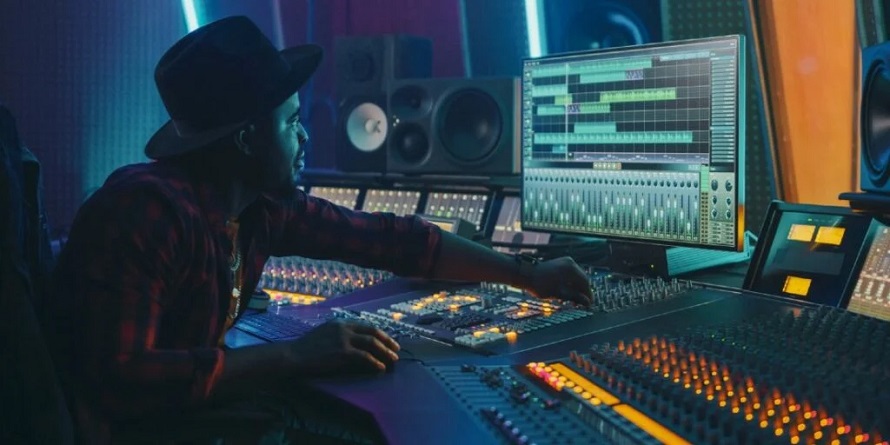
Keyboard MIDI Controller
If you’re serious about building a home studio, another piece of equipment you don’t want to overlook is a MIDI controller keyboard with extra features because it’s an essential tool that can take your music creation process to the next level. It provides a tactile and expressive way to interact with your DAW so it acts as a bridge between your creative ideas and the digital realm. It allows you to play virtual instruments, record MIDI data, and control various parameters within your DAW. Whether you’re a pianist, a synth enthusiast, or a producer looking to add melodies and harmonies to your tracks, this tool is a must-have!
What to Look for When Buying a MIDI Controller Keyboard?
When choosing a keyboard MIDI controller for your home studio, there are a few factors to consider:
- Size and number of keys: Keyboards come in various sizes, from compact models with 25 keys to full-sized keyboards with 88 keys. Consider your space limitations and playing preferences to find the right balance;
- Build quality and feel of the keys: Some designs offer weighted or semi-weighted keys, providing a more authentic piano-like feel, while others have synth-action keys that are lighter and springier. The choice depends on your personal playing style and the type of music you create;
- Additional features and connectivity options: Some MIDI controller keyboards come with knobs, sliders, and pads that allow you to control different parameters and trigger samples or loops. USB connectivity is standard nowadays, but it’s worth checking if the model offers other options like MIDI DIN or Bluetooth for more flexibility;
- Budget: Like all keyboards MIDI controllers come in a wide price range, so determine how much you’re willing to invest according to your needs and long-term goals. Remember that quality and durability are worth considering, as a well-built MIDI controller will serve you well for years to come. So go ahead and find the perfect model that suits your style and get ready to unlock new dimensions of expression in your music production journey!
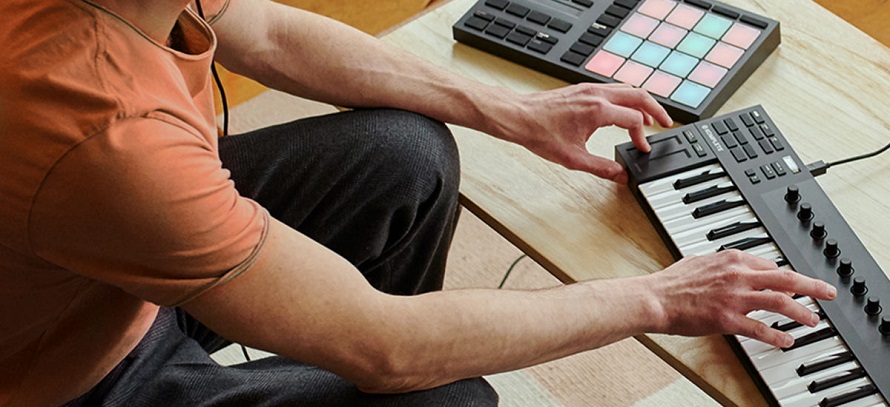
Audio Interface
An audio interface serves as the bridge between your computer and the outside world, allowing you to record and play back high-quality audio with professional-grade sound. At its core, it’s responsible for converting analog audio signals from microphones, instruments, and other audio sources into digital data that your computer can process. It also handles the task of converting digital audio back into analog signals for monitoring and playback. This way, a good interface captures your music accurately and maintains the integrity of your recordings.
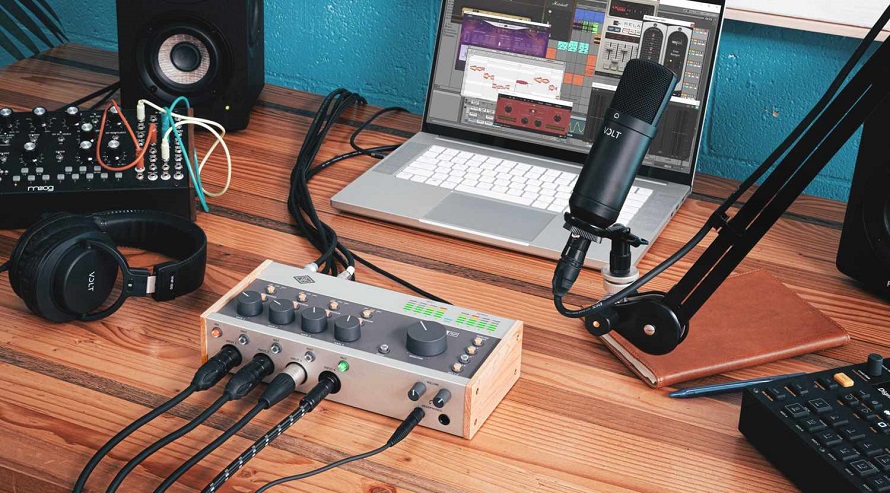
Quality Microphone and Headphones
These tools play a crucial role in capturing and monitoring sound accurately, ensuring that your recordings and mixes sound professional and polished. Let’s start with the microphone – a high-quality microphone is essential for capturing clear and detailed audio, whether you’re recording vocals, instruments, or any other sound source.
There are various types available, such as dynamic, condenser, and ribbon mics, each with its own characteristics and best-suited applications. Dynamic microphones are robust and versatile, making them suitable for live performances and recording loud sound sources.
Condenser microphones, on the other hand, are more sensitive and capture a broader frequency range, making them ideal for capturing vocals and acoustic instruments with precision and clarity. Ribbon mics have a vintage sound character and people often use them for studio recordings, especially for capturing instruments like guitar amps and brass sections.
A reliable pair of studio headphones is also crucial for accurate monitoring and critical listening during recording, mixing, and mastering sessions. They provide a flat frequency response, ensuring that you hear your recordings and mixes as accurately as possible without any exaggerated or hyped frequencies.
Look for headphones that offer a wide frequency range and a comfortable fit for extended listening sessions. Closed-back headphones provide good isolation, reducing the amount of sound leakage, while open-back headphones offer a more spacious and natural sound but with less isolation.
